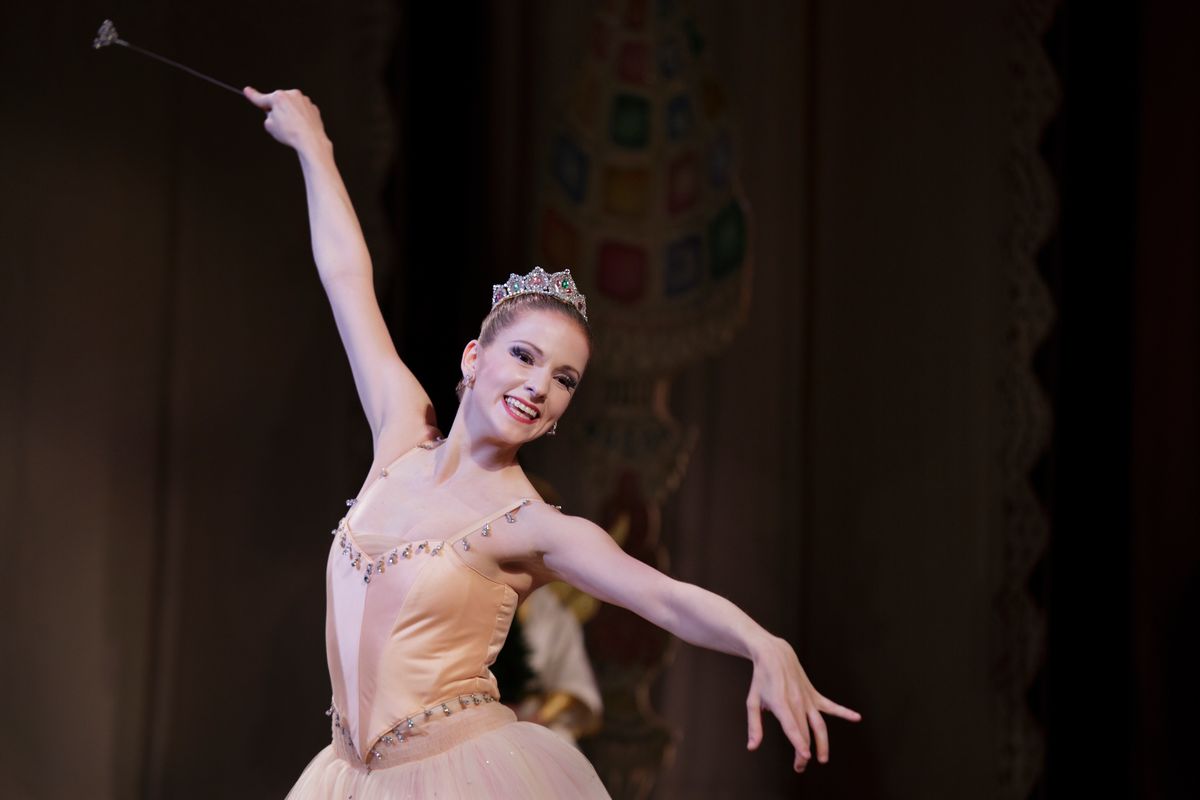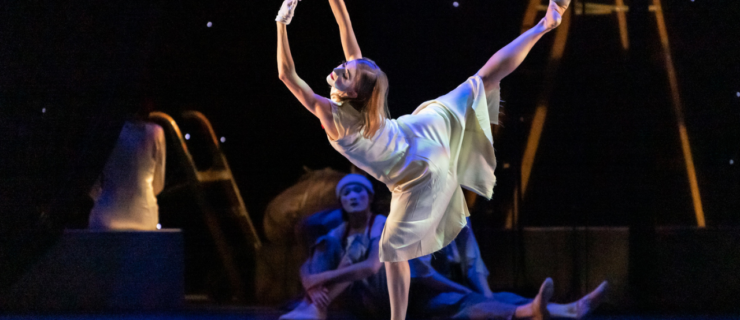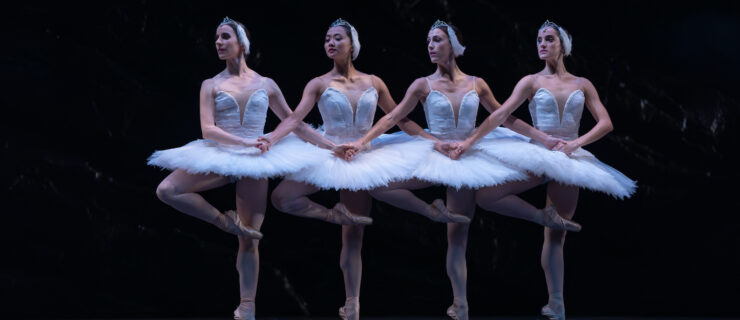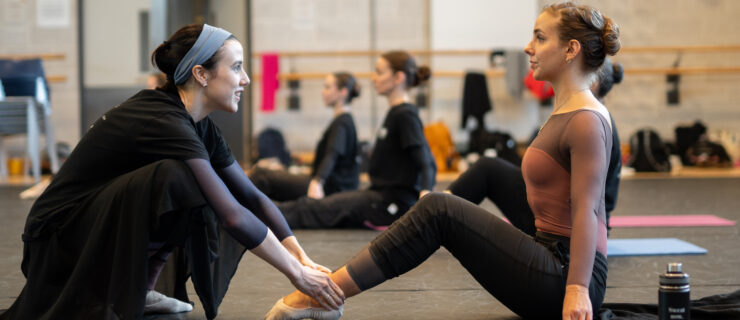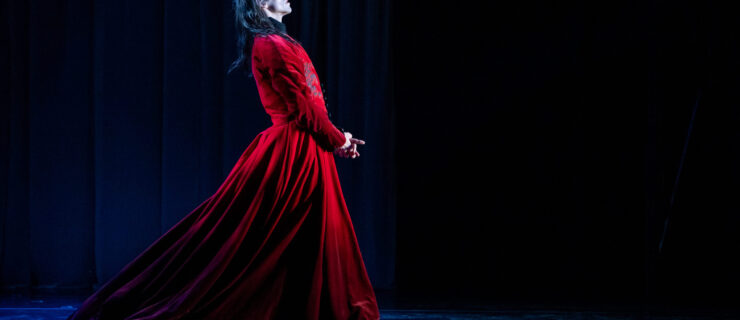What I Learned Dancing 48 Nutcrackers: NYCB's Abi Stafford On How They Helped Her Become the Artist She Is Today
This story originally appeared in the December 2014/January 2015 issue of
Pointe.
My first year at New York City Ballet, I was brought onboard three days before the “Nutcracker” season opened to replace injured dancers in the “Snow” scene, “Hot Chocolate” and the “Waltz of the Flowers.” Even though I suddenly had 48 performances ahead, I had grown up dancing George Balanchine’s “The Nutcracker,” so I thought I could happily revel in my first moments as an NYCB apprentice without worry.
My first onstage rehearsal for the “Snow” scene, in costume, with the snow falling, brought me back down to earth. The stages I had grown up on paled in comparison to the David H. Koch Theater, and I lacked the extra stamina required for covering large stages. By the end, I felt like a sloppy, ugly dancer. How would I be able to perform “Snow” and “Flowers” eight shows a week if one rehearsal completely exhausted me?

Abi Stafford as the Sugarplum Fairy in New York City Ballet’s production of George Balanchine’s The Nutcracker.
Paul Kolnik, Courtesy NYCB.
As the 48 performances slowly began to tick off, a tired, aching feeling set into my body—and lingered indefinitely. I could have slept for 12 hours each night if time had allowed. In the mornings I would wake up and immediately look at my rehearsal schedule to plan my nap. Sometimes I thought I would have to crawl into morning company class. My toes developed blisters and corns that had no time to heal, and each time I went on pointe, I felt jolts of pain shoot up my spine into my neck. I decided to smother my feet in soft fabric when I wasn’t wearing my pointe shoes, so I went to J. Crew and bought piles of the softest socks that I could find. I also experienced my first muscle spasm in my calf, which occurred not while dancing but sitting on the floor furiously sewing ribbons onto stacks of pointe shoes. Advil became my best friend. After the first two weeks ended, I honestly couldn’t understand how there were four weeks left to go.
Spending so much time onstage, however, helped me to gain valuable insight about performing in ways that only experience can teach. At first I thought that each performance was supposed to feel the same, in that I should be able to execute the steps exactly the same way each time. If the steps felt different, then I was dancing “badly.” A few weeks into the run, I realized that this notion was impossible—my performances didn’t have to feel the same in order to be successful. They were simply different. Ending up with new results is part of the joy of live performance.
Since I was logging so much stage time, I also learned to embrace the inevitable goofs, slips and trips and accepted that they are simply part of the deal. Initially my mistakes triggered tears and embarrassment. But then they became great stories, such as “I ran onstage a full four counts early, but at least I did it with authority.” Or, “The girl in front of me fell while I was running behind her and I almost stepped on her. Maybe I should have helped her up? I just left her behind.” Before long, I forgot them altogether.

Abi Stafford as the Sugarplum Fairy in New York City Ballet’s production of George Balanchine’s The Nutcracker.
Paul Kolnik, Courtesy NYCB.
Performing so much also caused my stamina to improve tremendously. I began to feel as if my muscles were permanently warm. I noticed that I no longer worried about getting through “Snow” and “Flowers” eight shows a week. Instead, I trusted my body to carry me through. I realized that I could perform with aching muscles and my energy levels close to zero and still somehow enjoy it, which genuinely surprised me. Allowing myself to have fun onstage kept me going back for more with each “Nutcracker” performance and well into the next season.
Now, “Nutcracker” is one of my favorite times of the year. I love revisiting the role of the Sugarplum Fairy, which I’ve performed for the last 14 years. Early on, I danced the part similarly each season because it felt comfortable and familiar. I accented the same steps, tilted my head the same way and looked at my partner at the same moments. A couple of years ago, I decided to focus on where I could tilt and turn my head differently. Another year, I found moments to look at the audience instead of at my hands (or the floor). Next year, I will try to change something else. Tinkering with small nuances helps keep the role fresh and exciting. And since I have a few different partners for the grand pas de deux, I now allow myself to respond to their individual movement qualities. Instead of going onstage saying prayers that each tricky move will go well, I go onstage saying “Let’s dance.” It’s not about just getting through it, but enjoying the experience and embracing the spontaneity of it all.
Dancing multiple “Nutcrackers” hasn’t gotten any easier. But I still look forward to it, and now, with all my experience, I know I can do it. If only I could’ve told my terrified 17-year-old self that everything I needed was already inside of me—strength, stamina, technique, confidence. While I used to be wrapped up in the idea of dancing perfectly every time, now I tell myself that I can simply try to dance well. Allowing myself to just try stirs up waves of excitement and curiosity. What will the outcome be? Finding out as I go is one of the best parts of dancing.
